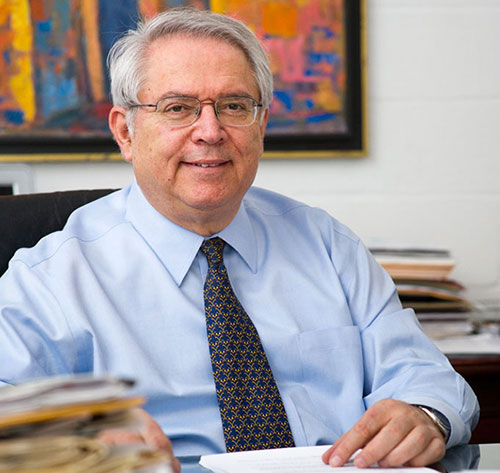
CANES: Systems-oriented knowledge helps integrate fission beyond the grid
While fission reactors are among the most intricate systems in the world, engineering them to run reliably and economically is only a starting point. Fission technology must integrate not only with the energy grid, but with society as a whole, meeting stringent safety, security, and environmental expectations with oversight from well-versed managers and policymakers.
Advancing this complex integration is a primary mission for MIT NSE’s Center for Advanced Nuclear Energy Systems (CANES), which conducts a combination of front-line technology development, groundbreaking strategic studies, and professional education for nuclear technologists and managers.
As the focal point of MIT NSE’s wide-ranging work in fission, CANES embodies the department’s science-systems-society approach to nuclear energy, playing a central role in the worldwide nuclear community and its ongoing development and improvement. CANES research spans many disciplines, including fission process physics, thermal hydraulics, materials science, systems reliability, and probabilistic safety analysis, but maintains a unified perspective that is rare in the academic world.
“Perhaps uniquely among universities, we are able to address all aspects of the reactor — MIT has a well-known reputation for addressing nuclear systems as a whole, as opposed to just the individual pieces,” explains Mujid Kazimi, TEPCO Professor of Nuclear Science and Engineering and Professor of Mechanical Engineering, who has directed CANES since its founding in 2000. Kazimi oversees more than 20 affiliated faculty and research scientists, and over 60 participating graduate students, all of whom contribute to the Center’s prolific production of research, analysis, symposia, and classes.
This broad reach has enabled interdisciplinary investigation of nuclear power’s overall future and the fuel cycle, and technological advances like improvements to light-water reactors (LWRs) and studies of novel reactor designs cooled by salts, liquid metals or gases. The systemic perspective means that topics like reactor maintenance and safety, regulation, and non-proliferation are always in mind. These issues in turn drive development of new materials and structures, which can significantly impact reactor performance and effectiveness.
“You can’t understand the entire system without being able to look both ways — at internal features and external impact,” observes Kazimi. “That’s essential to improving society’s readiness to accept the technology. In our report on the future of the nuclear fuel cycle, for example, we pointed out reactor concepts that might create a more-affordable closed fuel cycle, and also be more acceptable on external considerations like fuel resource needs and volume of waste. That came about because we were thinking of both sets of factors.”
CANES funding comes in roughly equal proportions from industry and government; it is a key player in major Department of Energy initiatives like the five-year Innovation Hub on Nuclear Modeling and Simulation, which sponsors the Consortium for the Advanced Simulation of LWRs, and the Nuclear Energy University Program. All leverage MIT NSE’s strengths in computational work and reactor design, which are augmented by the Institute’s research reactor facility.
Kazimi notes that CANES is actively ramping up “work on simulation of reactor-related microscopic phenomena. We felt a better foundation in nano-scale science would have a lot of payoff for advanced reactor technology.”
This work draws resources from multiple Institute departments, including Materials Science and Engineering and Mechanical Engineering, and touches on almost every aspect of reactor operation. Areas of inquiry include the fundamentals of corrosion, being studied by NSE professor Bilge Yildiz; exploration of thermodynamics and hydraulics of boiling coolants by NSE professors Jacopo Buongiorno and Emilio Baglietto; research scientist Michael Short’s studies of nano- and meso-scale formation of CRUD on reactor fuel rod cladding; and studies of cladding wear and fretting by MSE assistant professor Mike Demkowicz and ME professors Ken Kamrin and David Parks.
In addition, NSE professors Ben Forget and Kord Smith are working on advancing simulation of radiation transport in reactors, including transmutation of fuel materials exposed to the greatest levels of neutron and gamma ray fluxes. “Our computational powers are evolving so fast; Smith and Forget are adapting that power to improve reactor simulation today and tomorrow,” notes Kazimi.
CANES’s busy schedule of symposia and professional courses has included events in Europe, Asia and South America, as well as MIT’s longest-running summer program, the Nuclear Plant Safety Course, now preparing for its 46th session.
New in 2013 will be the International Nuclear Leadership Education Program (INLEP), an extension of CANES’s well-established Reactor Technology Course for Utility Executives, which serves a US audience. INLEP is designed for energy industry leaders from the roughly 20 countries that are launching or considering nuclear programs; it will provide essential training in governance, oversight, operational practice and technology, to help them develop effective nuclear power supplies.
CANES conducts a combination of front-line technology development, groundbreaking strategic studies, and professional education for nuclear technologists and managers
Written by Peter Dunn
Photo by Justin Knight
Related
- New NSE faculty drive curriculum expansion into computational science and engineering
- New NSE strategy strengthens core, opens boundaries; seeks better integration of technical and societal issues
- Future of the Nuclear Fuel Cycle
